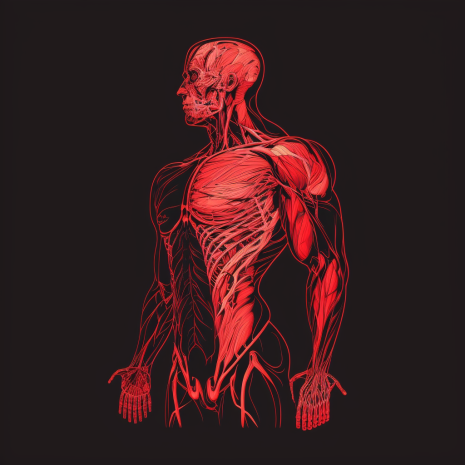Anatomy of the Muscular System
Introduction:
What is the muscular system? The muscular system is a network of muscles that provides movement, stability, and support for the body. It is made up of over 600 muscles that work together to move, maintain posture, and provide support for the body’s organs and tissues. It is a complex system that is vital in every aspect of your life, from the biggest things such as weight-lifting, to the smallest things of your blood vessels making themselves bigger or smaller as you sit down or stand up.
Types of Muscles
The human body has three types of muscles: skeletal muscles, smooth muscles, and cardiac muscles.
- Skeletal muscles are the muscles attached to the bones and responsible for movement. They are also known as voluntary muscles because we can control them consciously.
- Smooth muscles are found in the walls of organs and blood vessels. They are responsible for involuntary movements, such as digestion and blood flow.
- Cardiac muscles are found in the heart and are responsible for pumping blood throughout the body.
Muscle Structure
Muscles are fibers bound together by connective tissue. The fibers are composed of long, thin cells called muscle fibers packed together to form a muscle. Each muscle fiber comprises smaller units called myofibrils, which are responsible for muscle contraction. Myo means muscle, and this is an important term that will follow you through all of your medical education. (See myocyte, myocarditis, myoglobin)
Muscle Function
Muscles work in pairs to produce movement. When one muscle contracts, it pulls on a bone and causes it to move. The other muscle in the pair then relaxes, allowing the bone to return to its original position. This process, called muscle contraction, is controlled by the nervous system and requires the presence of the neurotransmitter acetylcholine. Try holding your arm straight out to your side, and now – while keeping your elbow in the same spot – take your hand and touch your head. Your bicep was ‘contracting’ while your forearm muscles were ‘relaxing’ to allow your bones to hinge along the elbow joint.
Muscular System Disorders
Several disorders can affect the muscular system, including muscle cramps, muscle strains, and muscle spasms.
- Muscle cramps are sudden, painful contractions of the muscles that can be caused by overexertion, dehydration, or electrolyte imbalances.
- Muscle strains are injuries to the muscles that are caused by overstretching or tearing.
- Muscle spasms are involuntary contractions of the muscles that can be caused by muscle fatigue or nerve damage.
Summary
Understanding the muscles will help you understand a lot of body mechanics, how your body moves, why it move the way it does, and many others. While in EMS it is not very important to know all the muscle names, it does not mean it is not helpful to know! Focus on the big ideas first, and once you master that then you can start down the pathway of learning the muscle names.
While there is not a shortage of resources or guides to these things all over the internet, the list above is very concise and to the point over the main idea for this system. If you’re interested in additional resources, we have a brief study guide for all the main systems available for free, with even more available if you subscribe and create a paid account today.
